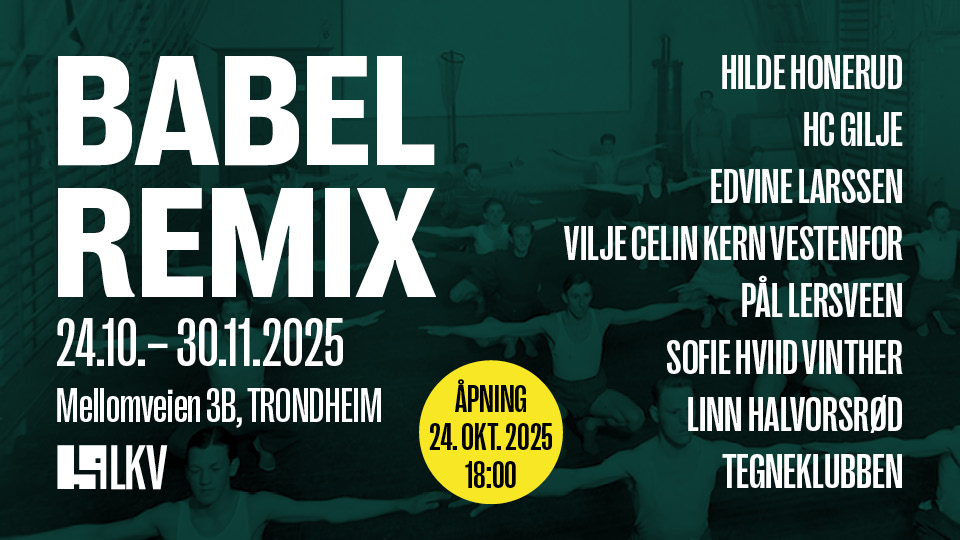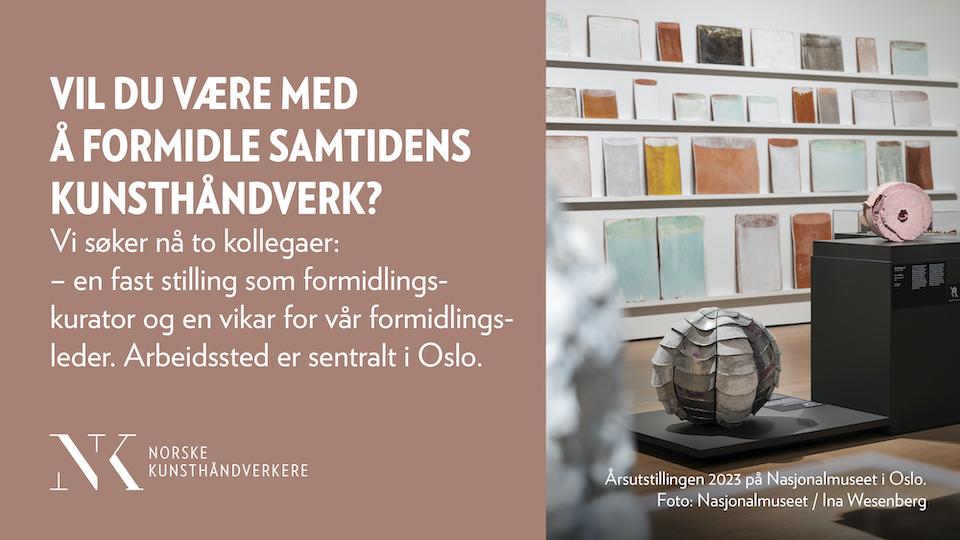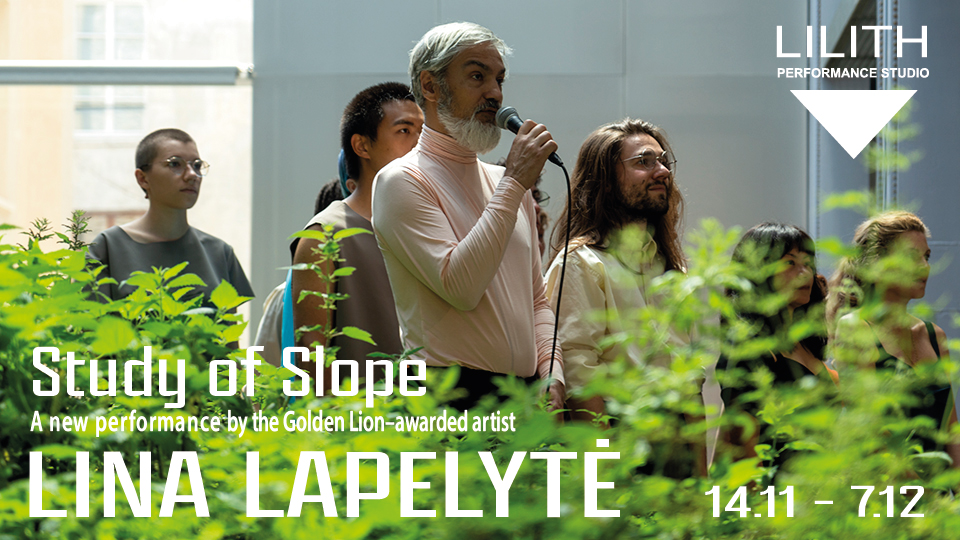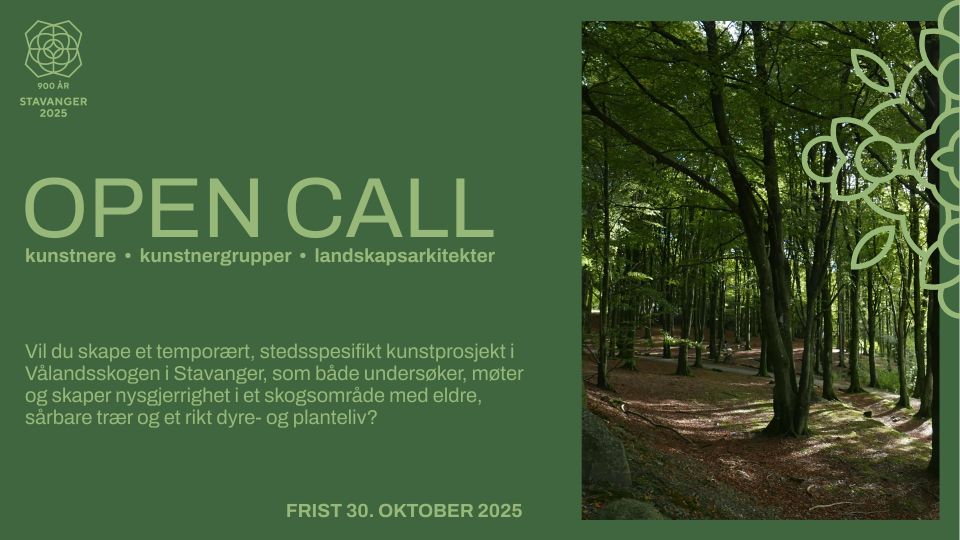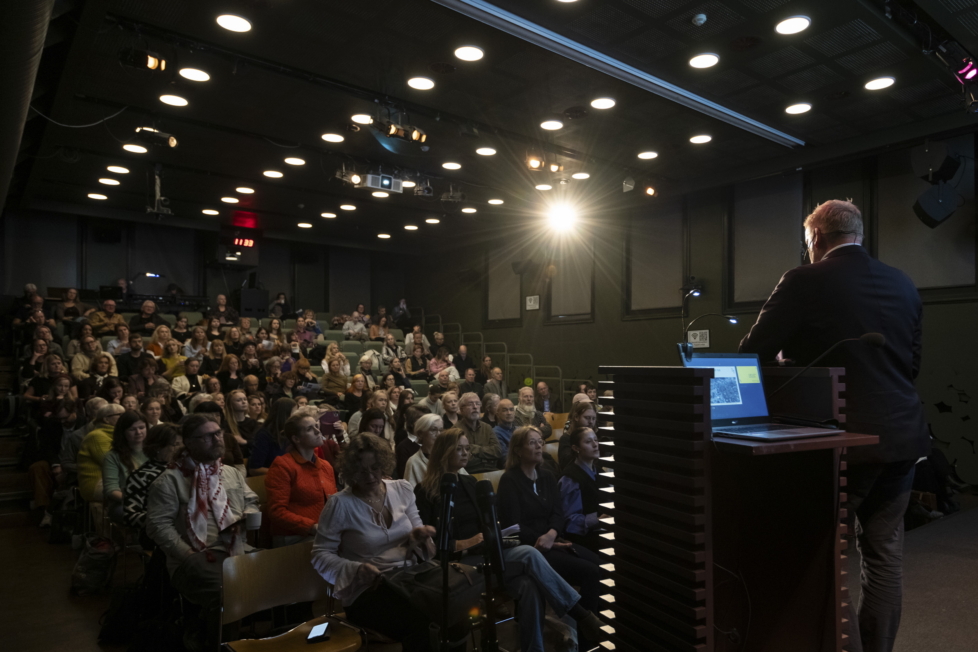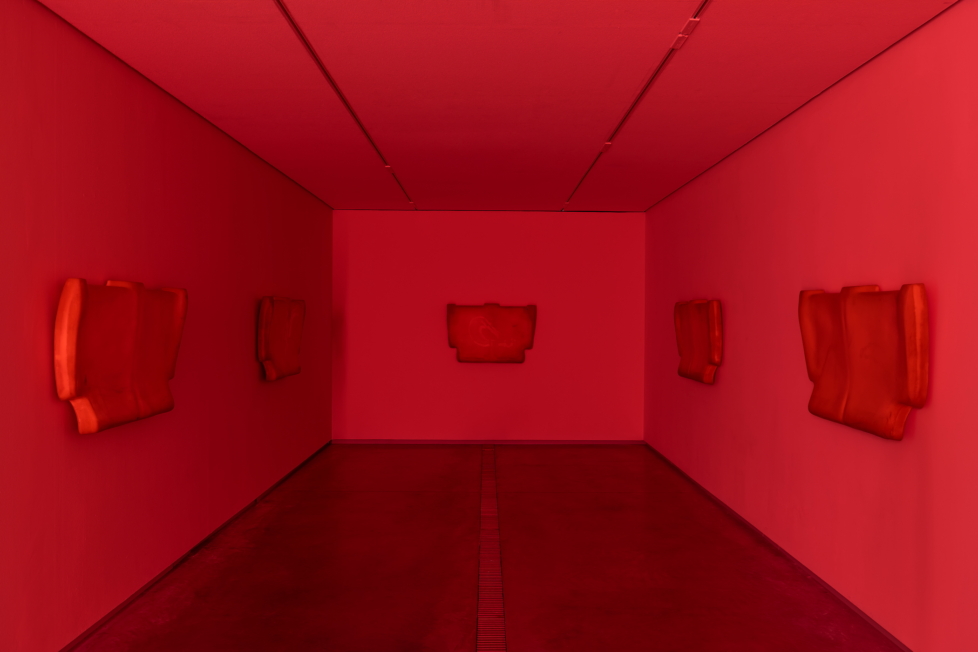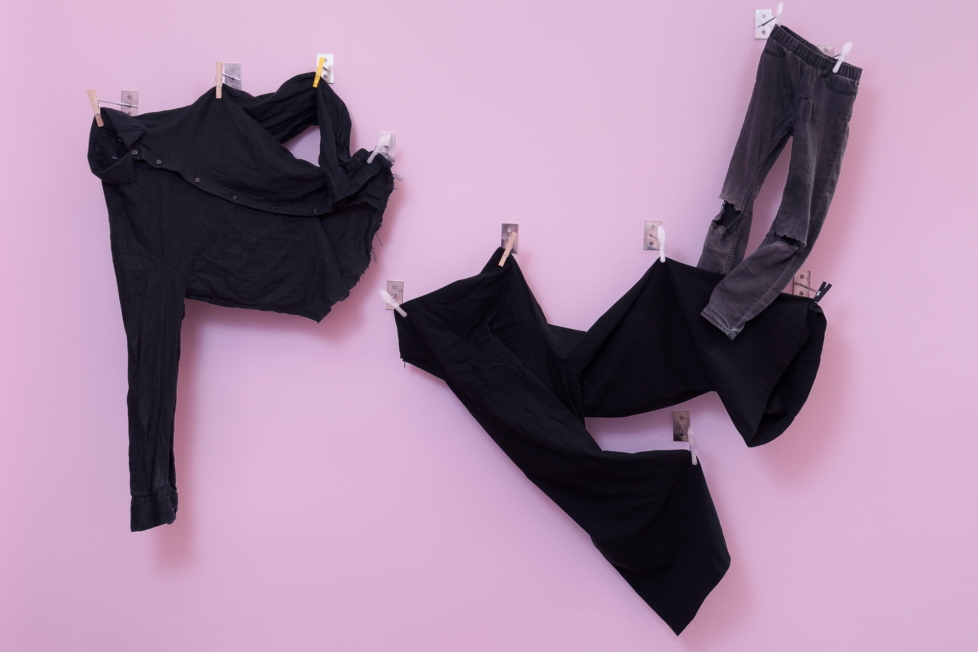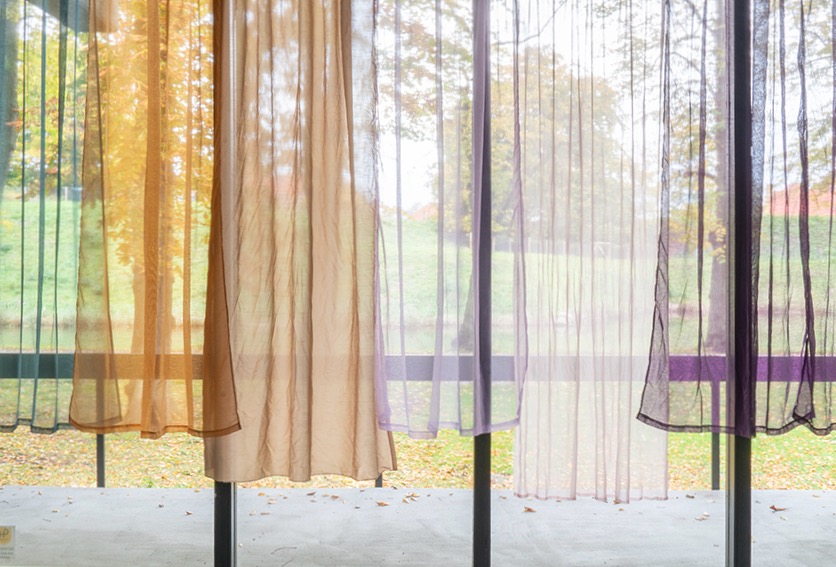
As you enter UKS (Young Artists’ Society) in Oslo, you will find four sculptures standing on the floor. Created in the round as part of the first institutional solo exhibition by Martin Sæther (b. 1986), the sculptures bear the likeness of the simplest, least remarkable white shelf sections from IKEA. They divide the room, screening the exhibition off from the gallery’s storefront windows – rather like shelves are often used in small studio apartments – but their main function is to support a series of reliefs moulded out of coarse, greyish-brown papier-mâché.
The papier-mâché images have been glued onto the length of each sculpture, covering the entire surface; their texture is similar to that of enlarged fibreglass wallpaper, or paper towels. They are embossed with reliefs the size of a hand: one features a graphic leaf pattern, another sports dancing flowers. The densest, most engaging image has leaves, damp spots, and an imprint of what looks like metal fencing. The simplest is so restrained that it is hardly even a a picture at all. Here, the moulded texture speaks for itself without any additional visual elements, making it look exactly like an unpainted plywood sheet of the kind that form the backs of the shelf structures.

These are exquisitely sensitive images, almost anti-aesthetic and anti-literary in feel, blending in with their setting through subdued, tentative references to design and interior details. The patterns are similar to those found on toilet paper and wallpaper – modes of expression that neither want nor are able to communicate anything specific to us, but an aesthetic that is just there. Sæther’s use of such invisible everyday ornamentation draws on an aesthetic ‘neutrality’ whose main purpose, outside these works, is not to arouse, offend, or stand out. At the same time, the traces left by the casting process pull away slightly the overall feel of these pieces from their industrial and standardised origins.
A video in black and white – shown on a cube-shaped monitor at the back of the exhibition – offers some indication of the intentions behind Sæther’s imagery. A changing, shifting collage of transparent sheets repeats these familiar, homely patterns alongside photographs of interiors and naïve illustrations of insects. One sequence juxtaposes drawings of nineteenth-century clothing with simple graphic patterns, an approach which more than suggests that ‘neutral expressions’, like clothes and fashion, have their own historical styles. Fibreglass wallpaper painted in eggshell white is an example of interior design that has shifted away from being quite neutral to being regarded as ugly and distasteful. Today, a properly neutral wall is white, plain and smooth, not unlike the aesthetics seen in Sæther’s shelf structures. The aesthetic contrast between the images and the sculptural supports conveys how the vast majority of homes actually look: a shabby wall here, a slightly anonymous piece of white furniture there.
A print shows a toboggan with a cute-cat-face motif. Another presents a paper cast of a doorbell: rectangular and made of small squares at alternating angles, supposedly a very widespread model in Scandinavia. Both are references to mass-produced products that may be regarded as trivial, but which can nevertheless arouse a sense of nostalgia associated with specific locations and stages of life.

A small, wall-hung picture, its frame and motif moulded as one piece, shows an oversized key in relief. The subject can be regarded equally as unique (every key belongs to one specific door) and generic (all keys look the same). This duality is echoed in the individualising, greyish-brown and white air bubbles created in the casting process. Here, sensitive, emotionally-charged, and demanding sculptures and images spring forth from the least expressive details imaginable.
Interior design themes have appeared in many exhibitions in Olso during recent years. At Eirik Sæther’s exhibition at Kunstnernes Hus, arranged by UKS in 2017, and at Aurora Sander’s exhibition at the Norwegian Sculptors’ Society in 2018, installations inspired by interiors and furniture spoke of various personalities and their place in the world. American artist Than Hussein Clark’s exhibition at VI, VII in 2017 looked like an opulent set design with stylistic references to art deco and the Wiener Werkstätte. Martin Sæther’s approach is very different from these previous efforts because he works with objects, textures and patterns so commonplace that they tell us little or nothing about their owner. This exhibition finds a sense of romance in the genuinely democratic, in shared experiences.




